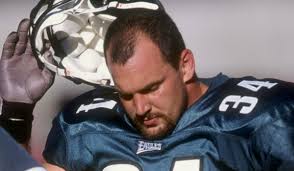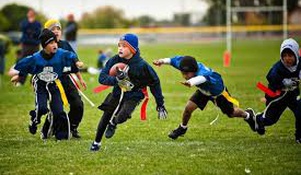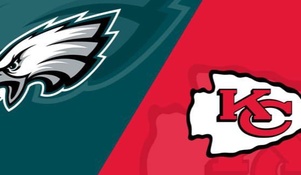Here's why 19,000 former NFL Players agreed to the Concussion Settlement
C.T.E. (Chronic Traumatic Encephalopothy) Three big words and one small acronym for what has been labeled the “industrial disease” of NFL football players.
Ever since Dr. Bennet Omalu performed an autopsy of Mike Webster’s brain, and saw the build-up of an abnormal protein called tau, there has been a concerted effort by scientists and researchers to see if they can detect the disease in living persons and discover how much risk an athlete has of developing C.T.E. But there is also the big question of why some players seem far more susceptible to it than others. No one knows the answer to that question, yet. Dr. Bennet Omalu has gone on the record in the publication Frontiers in Neurology saying “diagnosis of CTE remains autopsy based,” there is a “lack of specific diagnostic criteria required for pre-mortem clinical diagnosis,” and there is “currently no accepted method of diagnosing CTE until post-mortem pathological analysis has been conducted.”
Despite those statements and the relatively small body of science on C.T.E., 94 players have appealed the NFL Concussion Settlement because, for the most part, they want all of the symptoms that are associated with the disease to be covered - and therefore entitling players to monetary awards.
According to the Boston University Center for the Study of C.T.E., “the symptoms include memory loss, confusion, impaired judgment, impulse control problems, aggression, depression, anxiety, suicidality, parkinsonism, and, eventually, progressive dementia. These symptoms often begin years or even decades after the last brain trauma or end of active athletic involvement.”
After Judge Brody conducted a Fairness Hearing on November 19, 2014 she approved the Concussion Settlement on April 22, 2015. In her Memorandum of Opinion she explains in detail why she made some changes to the agreement, but shot down the C.T.E. arguments for players wanting to be compensated for many of the "behavioral type" symptoms . She said "the Settlement only provides compensation for serious, objectively verifiable neurocognitive and neuromuscular impairment with an established link to repetitive head injury." She goes on to say that "Mood and behavioral symptoms are commonly found in the general population and have multifactorial causation." And this comment will definitely come out in the courtroom (if they get that far) for players that opted out and continue their litigation against the NFL: "Retired Players tend to have many other risk factors for mood and behavioral symptoms. For example, a typical Retired Player is more likely than an average person to have experienced sleep apnea, a history of drug and alcohol abuse, a high BMI, chronic pain, or major lifestyle changes. An individual Retired Player would have a difficult time showing that head impacts, as opposed to any one of these other factors, explain his symptoms."
Our lawyers knew all the information in the last sentence of the previous paragraph and they conveyed it to numerous players in meetings and webinars across the country. During Settlement negotiations they threw as much at the NFL's wall as they could - but not all of it could stick. It's one thing to put C.T.E. in a complaint, but when it comes to proving it in a court of law, that's a whole different ballgame. As much as all of us would have liked to have seen the other symptoms typically associated with C.T.E. included in the Settlement, the science was not on our side. I believe that most of the 19,000 former players that stayed in the Settlement understood this. Nonetheless, the media continued to stoke the flames of this issue and got "punked" by a UCLA study that claimed they had a test that could diagnose C.T.E. in living players. It got everyones hopes up. I feel bad for guys like Tony Dorsett, Leonard Marshall and Joe DeLamielleure that were caught in the middle of that firestorm, but the good news is, they could still get compensated under the terms of the Settlement, if they have the memory problems and cognitive impairments that have been established in the Settlement. You don't have to be a slobbering, mindless idot to get an award. They may not have symptoms that rise to the level of a "Qualifying Diagnosis" and thus a monetary award right now, but if they are already starting to show signs of the disease, it may not be long before they do. Even if they don't get an award, they may qualify for free treatment and prescription drugs to help them with their current symptoms.
The New York Times, Alan Schwartz and ESPN writers Mark and Steve Fainaru have been at the forefront of the reporting that has centered around C.T.E. They have been relentless in their search for the truth – including what the NFL knew; when they knew it; and if they’ve tried to cover up what they knew. They are now questioning whether the NFL has tried to suppress information and silence those that are leading the efforts to increase our understanding of C.T.E. It has become their “Watergate” so to speak, and the documentary League of Denial: The NFL’s Concussion Crisis was just the beginning of the crusade against the NFL.
The NFL has had enough - and now they're starting to fight back. They want the New York Times to retract their statements – especially the ones that compare them to the tobacco industry. They have issued a veiled threat to sue the Times for defamation and have actually turned the tables on them saying that the Times was in bed with big tobacco. Wow, sometimes the best defense is a good offense.
The Fainaru brothers have stuck to their guns. They’re a lot like Woodward and Bernstein, but they haven’t found their “deepthroat” who can lead them to information that could topple the President (NFL Commissioner Roger Goodell). They are trying to “follow the money” but in all directions, it only highlights the League’s $100 million commitment to the whole issue of brain injury education, prevention, treatment and making the game safer. The League is even working with some of the players that have sued them. They've been hiring Ambassadors for the NFL who are working with young people involved in the USA Football "Heads up Program."
I applaud Alan Schwartz and the Fainaru brothers for all they have done to bring awareness to the problem of concussions - at all levels of football - and how they exposed the NFL's denial of the science. The NPR documentary League of Denial and the Fainaru's book should be called the NFL’s “sub-concussive” crisis, because most researchers now believe that it is the cumulative effects of sub-concussive blows that are doing the most damage to the brains of athletes involved in contact sports.
When the lawsuits from former players began to mount against the NFL, like an offense trying to push it into the endzone from the one yard line, the League had a pretty good defense. Their legal arguments included causation, statute of limitations and assumption of risk. They might have been able to stop us on those three downs, but before we could score and get our case in front of a jury, the referee, Judge Brody called a time out and asked both teams if they could come to a Settlement - the equivalent of having the game end in a tie. No losers – just a compromise that would put an end to the war.
As a result of the Settlement, former players don’t have to prove that the NFL caused our injuries and we get monetary awards, free testing, treatment and an education fund. In exchange for that, the NFL doesn’t have to accept any liability (responsibility) and they don’t have to worry about future lawsuits being filed by approximately 19,000 player that are part of the Settlement.
Before Judge Brody called the timeout, there was another huge defensive strategy in the NFL’s playbook that they were using. It’s known as “preemption” - which basically means that former players should be required to resolve their disputes with the NFL under the terms of the CBA (Collective Bargaining Agreement) which has remedies that include applying for workers compensation and disability. If players aren’t happy with the outcome, there is a grievance process that can lead to binding arbitration. Unfortunately, the deadlines for filing claims via the CBA process are not favorable to former players. You can see a copy of the NFL's motion to dismiss on the grounds of preemption here.
Neither the NFL, or our lawyers knew how Judge Brodie would rule on the preemption issue, but court precedents have now been established and if she ruled in favor of the NFL, our offense would have looked as miserable as Russell Wilson and the Seattle Seahawks did when Superbowl XLIX ended on an interception at the goal line. Game over. Case closed. Don't let the door hit your ass on the way out!
The Preemption issue was one of the main reasons I recommended Settling out of court with the NFL. The New York Times quoted me in this July 22, 2014 article: "For Retirees, Decision on Concussion Settlement Will Not Be a Simple. They wrote “The lawyers fought as hard as they could and got as much as they could from the settlement,” said Nixon, who writes a blog about the settlement. “To continue litigation was pretty risky.” The settlement, he said, will get money into the hands of the former players who are in the worst shape, such as those with Parkinson’s disease or Alzheimer’s disease, and will act as an insurance policy for players whose health might deteriorate. “We didn’t get everything we wanted, but we got the N.F.L. to say, "We’ll give you guys money if you have symptoms," he said. “The bottom line is if you’ve got impairments and symptoms, you’ll get paid.”
The Settlement is not perfect, but I continue to believe that it is our best chance of getting something for the guys that are the most severely affected by cognitive impairments.
Even if we had continued our litigation and won all the arguments and finally had an opportunity to plead our case in front of a jury of our peers, we would still have to convince them that C.T.E. was the reason we were having all the problems we were experiencing. We would have to prove – beyond a shadow of doubt – that we were injured solely by our play at the NFL level (not pee wee, Pop Warner, High School or College) and that those injuries were the result of both a conspiracy and negligence on the part of the teams and the League. That would have been a steep hill for any lawyer to climb, and in my opinion we were fortunate to get the NFL to settle. In fact, I think the NFL knew they could win in court, but how would that look? Beating up on a bunch of old brain damaged men. That's not the kind of PR the NFL wanted - so they settled. I can assure you, they won't be as kind to the players that opted out of the Settlement and want to continue their litigation.
I’ve said this before, but it bears repeating. The vast majority of the fans of the NFL - “our potential jurors” - are not even remotely sympathetic to our cause. If you look at the majority of comments they have posted on articles written by the New York Times and other media websites, you will see them saying the same thing over and over: Football is a dangerous game and the players knew that before they ever stepped one foot on the field. That’s the legal argument for “assumption of risk” in a nutshell.
I personally do not want to entrust our case to a jury that already thinks we should just shut up and stop complaining. To a certain degree, I can understand why they might feel that way. I knew that I could be injured badly and even paralyzed for life if I got hit the wrong way. In 1978, the year before I played for the Buffalo Bills, Darryl Stingley was involved in a bad collision with Raiders defensive back Jack Tatum. That collision left him paralyzed and in a wheel chair for the rest of his life. All players knew that we could be just one bad collision away from an injury that could haunt us the rest of our lives. Did that stop us? No. Has it stopped any player from trying to make a roster in the NFL? No. If we knew then, what we know now about concussions, would it have stopped anyone from playing football? For 99% of us I think the answer would still be no. You can't be an effective player and also be thinking about the possibility of getting injured. You have to believe you are invincible and that it could never happen to you. With the amount of money that can be made in today’s NFL, it’s even harder for a current or prospective NFL player to just say no.
A lot of news organizations and researchers have written articles that have given former players the false hope that C.T.E. should have been included in the Settlement. But then something amazing happened on Easter morning. The New York Times rose from the dead and wrote an article that laid out some of the main reasons our lawyers could not get former players compensated for C.T.E. during their lives - or after their deaths (with the exception of players that died with C.T.E. between 2006 and the approval of the Settlement.)
It’s interesting to see that the same researcher that would like C.T.E. included in the Settlement - Robert Stern - is the same researcher that the NFL was using to exclude C.T.E. from the Settlement. Dr. Stern has been a harsh critic of the Settlement, but his own statements and Dr. McKee's statements hurt our case. Here is a link to the Times article: On C.T.E. and Athletes, Science Remains in Its Infancy.
Here are a few excerpts from the article:
Some researchers worry that the rising drumbeat of C.T.E. diagnoses is far outpacing scientific progress in pinpointing the symptoms, risks and prevalence of the disease. The American Academy of Clinical Neuropsychology, an organization of brain injury specialists, is preparing a public statement to point out that much of the science of C.T.E. is still unsettled and to contend that the evidence to date should not be interpreted to mean that parents must keep their children off sports teams, officials of the group say.
“The problem is that these findings are being put out there too fast, and stated too strongly, by one group, before we understand who gets C.T.E., how it evolves over time, what’s the risk — any of that,” said Dr. Lili-Naz Hazrati, a brain pathologist at the University of Toronto who said she had received no financial support from either the N.F.L. or the Players Association.
Members of the Boston lab say they have raised the alarm for a good reason - the risk is real - but agree that the C.T.E. story is far from complete. “This research is in its infancy,” said Robert Stern, a professor of neurology and neurosurgery at the Boston University School of Medicine, who works with Dr. McKee. “There are many outstanding questions, but we’re now working to answer them and making some progress.”
Many players had their hopes rise again when they heard that the Brain Bank, that Dr. McKee works at, found that a majority of the 93 brains they examined had some level of C.T.E. But, the Times article pointed out that "... the Boston group’s collection of brains is not representative of the pro-football population, as the researchers there acknowledge. The brains were given to the center by families of athletes who were showing severe symptoms of the injury, and not from former players who were not. “We can’t say from this sample whether the rate of C.T.E. in pro players is 1 percent or what; we have no idea,” Dr. McKee said.
I have written about the problems our lawyers faced in trying to get C.T.E. included in the Settlement on several occasions and I have cited law professionals on why the appeals to the Settlement are unlikely to succeed, but a small number of former players are still not convinced by the evidence (or lack thereof) and insist that C.T.E. should be included in the Settlement. Some of these players opted out of the Settlement and some of them have appealed the Settlement.
I have gone on record as saying I don't think players should have opted out of the Settlement. At the same time I have argued that it was better to opt out than it was to appeal the Settlement. Appealing the Settlement delays the monetary awards for the players that currently suffer from dementia, Alzheimer's, ALS and Parkinson's disease. It also prevents players from getting free baseline assessments, treatments and prescription drugs for the early onset of cognitive impairments. About 220 players opted out, but 94 stayed in the Settlement and chose to appeal Judge Body’s ruling. It’s been almost one year since the first appeal was filed. Several lawyers have have asked for an end to the appeals. How much longer should former players have to wait?
The Third Circuit Court of Appeals should be making a decision on the appeals any day now. I don’t know how they will rule, but if they dismiss the appeals, Judge Brody could begin the process of implementing the Settlement immediately. But that will only happen if there are no more appeals. If there are, then we might be looking at another six months to a year before anything happens.
Former NFL players like to say “Delay, Deny and Hope we Die” when referring to the NFL and the way they have used “studies” and the courts to kick the can down the road as far as possible on different issues that pertain to current and former players. But this time we would only have ourselves to blame. If this case continues to be appealed, more and more players will die and miss out on the opportunity to personally benefit from the money that will be awarded.
Steve Marks, Kevin’s Turner's attorney for the NFL concussion settlement said "Despite the difficulties he [Kevin Turner] faced, he was always concerned about his NFL brothers and ensuring they had the care and support if faced with similar circumstances.”
Christopher Seeger, the lead attorney for the players in the Settlement said "Kevin selflessly fought for compensation and benefits for retired players who suffered from concussion-related illnesses by pushing to finalize the settlement. He was always concerned about the interests of the broader retired NFL player community -- never himself -- and worked tirelessly on their behalf so they could receive the care and support they needed.''
Before his son’s death, Ray Turner said "There's a lot of players in really bad shape that are probably not going to see (the money) because of the delays." In the back of his mind I'm sure Ray knew that Kevin might become one of the casualties in this ongoing court battle.
Kevin himself argued against appealing the settlement because he knew it would delay getting help to other players who deperately needed financial assistance with medical bills and day-to-day expenses related to their inability to work and provide for their families. He said "I can empathize with players who want a better settlement, but for me and people like me, time is a luxury we don’t have.”
Time ran out for Kevin and several other players since the appeals process began.
I urge my alumni brothers that have appealed the Settlement to drop any further appeals if the Third Circuit Court does not rule in their favor.
I can’t think of a better way to honor the memory and the wishes of our lead plaintiff - the man who carried the torch for all of us.







